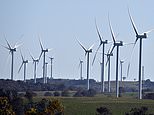URGENT UPDATE: AGL’s latest annual report reveals alarming findings: renewable energy is projected to cost Australians TRIPLE the price of coal. This shocking revelation could have profound implications for energy bills across the nation.
In the 2025 financial year, AGL generated over 26,000 gigawatt hours from coal, compared to just under 5,000 gigawatt hours from renewables. The report detailed that AGL spent $392 million on coal electricity generation versus $233 million on renewables and storage. This translates to a staggering cost of $15 per megawatt hour for coal, while renewables, including storage, surged to $47 per megawatt hour.
“This is why our energy bills keep going up,” remarked 2GB host Ben Fordham on his morning show. He criticized the government’s push to phase out coal, highlighting that despite its lower cost, 80% of AGL’s energy generation still relies on coal. Fordham noted, “Coal is still king… but it won’t be around forever.”
With AGL’s plans to close its coal-fired power stations by 2025, the urgency for a viable alternative increases. Fordham pointed out that gas, often touted as a solution, costs a staggering $115 per megawatt hour, far exceeding coal’s price.
The report arrives at a critical time. For the first time, electricity generated from renewable sources has outpaced coal, with 9.24 terawatt hours of renewables produced in September, compared to 8.8 terawatt hours from coal. This shift, however, raises concerns about reliability, especially as the east coast of Australia braces for potential rolling blackouts.
In a statement from the Climate Council, they assert that renewables are the most cost-effective option for future energy needs, with wholesale prices for renewables at $74/MWh compared to $135/MWh for coal and gas.
The situation is further complicated by the extension of the Eraring power station in New South Wales, originally slated to close in 2025, now extended to August 2027. Premier Chris Minns emphasized the need to prevent power shortages, saying, “I’m not going to let the power run out in NSW.”
As discussions around energy policy heat up, the implications of AGL’s findings could spark significant debate among policymakers and consumers alike. Will Australia pivot back to coal to stabilize prices, or will the push for renewables continue despite rising costs? The energy landscape is evolving rapidly, and all eyes will be on how these developments unfold in the coming months.
Stay tuned for updates as this situation develops, and consider the impact on your future energy bills.







